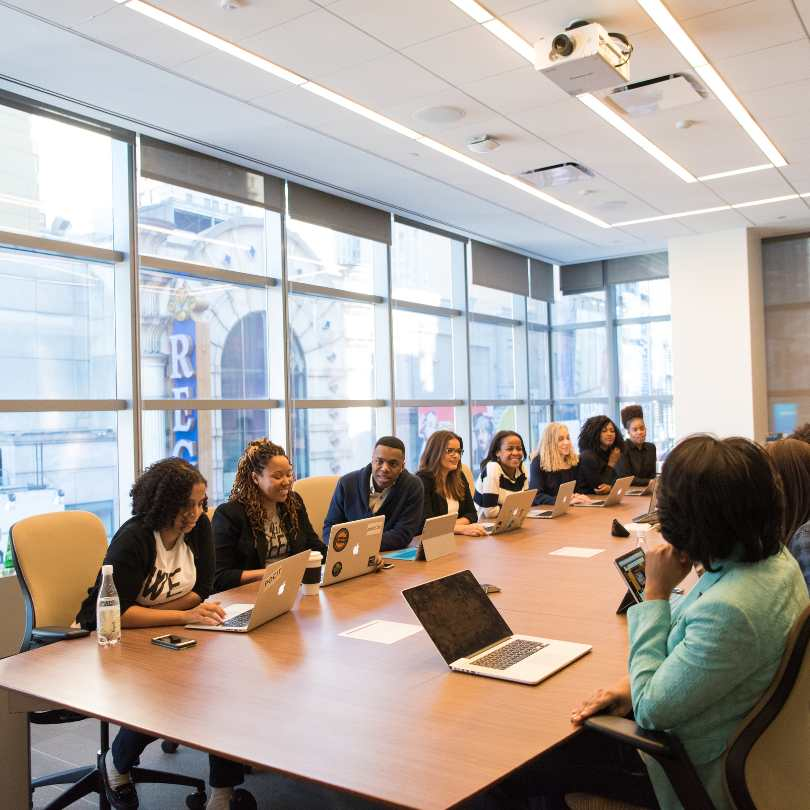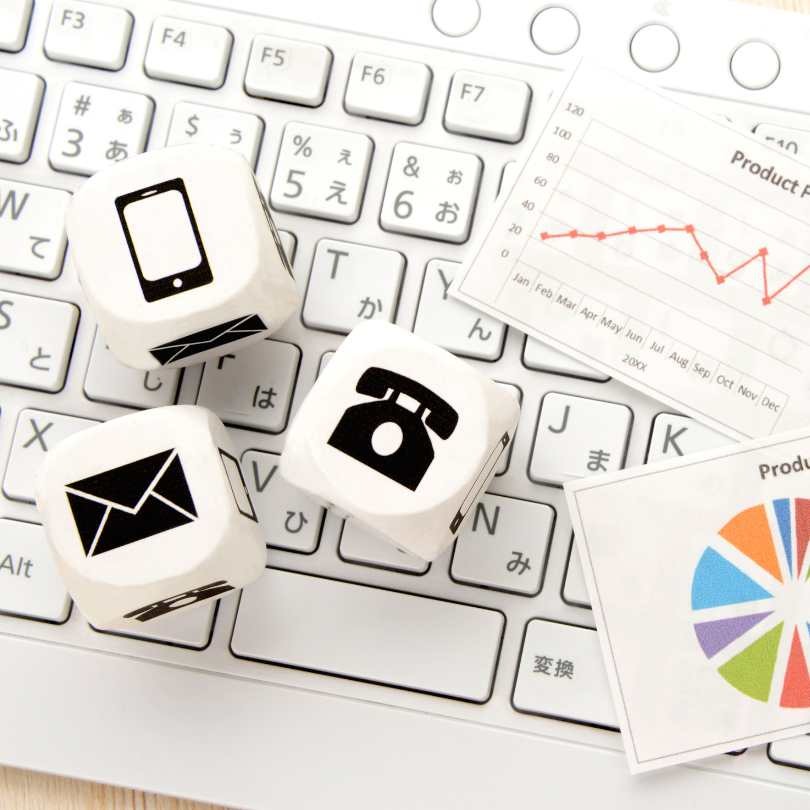
We live in an increasingly interconnected world where effective communication is paramount to success, both professionally and personally. However, many of us encounter barriers to communication that hinder our ability to convey messages clearly and accurately. What if we could overcome these roadblocks and unlock the full potential of our interaction skills? This blog post will take you on a journey to explore strategies for overcoming barriers to communication and enhancing interpersonal relationships, enabling you to communicate with confidence and ease.
From linguistic obstacles to cultural differences, this comprehensive guide will provide insights into the various types of barriers to communication and offer practical solutions for navigating them. So, let’s dive in and discover how to break down these barriers to communication, foster better connections, and elevate our communication skills to new heights.
Table of contents
- Key Takeaways
- Intriguing Data: The Influence of Communication on Business Dynamics
- Understanding Communication Barriers
- Overcoming Psychological Barriers
- Navigating Physical Communication Barriers
- Enhancing Interpersonal Relationships
- Adapting to Cultural Differences
- Leveraging Communication Technology
- Developing Effective Communication Plans
- Summary
- Frequently Asked Questions
Key Takeaways
Recognize and manage communication barriers to facilitate effective exchange of information.
Implement achievable goals, positive self-talk, and professional help to overcome psychological barriers.
Leverage technology, practice active listening & empathy, adapt to cultural differences for successful message delivery.
Intriguing Data: The Influence of Communication on Business Dynamics
In today’s fast-paced business environment, the importance of effective communication cannot be overstated. It is the bedrock upon which productivity, engagement, and trust are built within an organization. Let’s delve into some compelling statistics that illustrate the profound impact communication has in the workplace.
Boosting Productivity Through Communication
A Connected Culture Report from 2020 revealed a striking correlation between communication and productivity. Teams that excel in communication practices can experience a surge in productivity by 20-25%. This is a clear indicator that fostering an environment where information flows seamlessly can significantly enhance a team’s output.
The Role of Engagement in Employee Performance
Disengagement is a silent killer of workplace potential. Gallup’s State of the Global Workplace: 2023 Report paints a stark picture, with disengaged employees contributing to a staggering $8.8 trillion loss in global productivity. On the flip side, employees who are engaged perform 17% better than their disengaged counterparts. The key to unlocking this engagement? Consistent and transparent communication.
Retention: A Communication Perspective
The phenomenon dubbed ‘The Great Resignation‘ has seen employees reevaluating their career paths, with many considering a switch. Here, communication emerges as a pivotal factor in retaining talent. Engaged employees, who often benefit from effective communication, are 87% less likely to leave their organization, highlighting the role of communication in fostering loyalty and satisfaction.
Building Trust Through Effective Communication
Trust within the workplace is not just a feel-good factor; it’s a necessity for a thriving organizational culture. A significant 74% of employees express a preference for employers who are transparent and trustworthy. The foundation of this trust? You guessed it communication.
The Financial Implications of Communication Barriers
The cost of miscommunication can be astronomical for businesses, with some companies incurring losses of up to $62.4 million annually due to ineffective communication. This figure alone should be a wake-up call for organizations to invest in robust communication strategies.
In conclusion, the data is unequivocal: communication is a critical determinant of an organization’s success. By implementing strategic communication practices, businesses can not only enhance productivity and engagement but also solidify trust and reduce turnover, ultimately leading to a healthier bottom line.
As we navigate the complexities of the modern workplace, let us not underestimate the power of a conversation, the clarity of a memo, or the impact of an open-door policy. After all, when we communicate better, we work better.
Understanding Communication Barriers

Communication barriers are impediments that inhibit the successful exchange of information, thoughts, and ideas between individuals during the communication process. In our globalized and diverse world, recognizing and understanding how to overcome these barriers is paramount to achieving effective communication. There are seven primary communication barriers:
Linguistic obstacles
Emotional hurdles
Cultural differences
Psychological barriers
Physical communication barriers
Interpersonal relationship barriers
Technological barriers
Communication barriers in a workplace can take many forms. Examples include:
Multigenerational workplaces
Remote work
Dispersed workforce
New communication technology
Different employee expectations
Recognizing these barriers is a fundamental communication aptitude that assists with administration, interconnecting, sales, and having the capacity to communicate effectively with people.
In exploring each barrier, we will reveal practical strategies to dismantle these obstacles, thus sharpening our communication skills.
Linguistic Obstacles
The language barrier is a physiological barrier that restricts effective interaction. Regional dialects, phrases, and non-verbal communication might be misunderstood or deemed inappropriate in dialogue. Unnecessary use of technical words should be avoided in the content of a message to effectively communicate and adapt to the receiver’s own communication style.
Cultivating an appreciation for unfamiliar dialects and using easily understood language can help surmount language barriers, enhancing face-to-face communication. The varying linguistic aptitudes of employees, along with emotional barriers such as stress, anger, and low self-esteem, can influence the communication channels within an organization.
Hence, it is important to consider the diverse linguistic abilities and emotional barriers of employees for effective communication within the organization.
Emotional Hurdles
Negative emotions, such as stress and anger, can impede effective interaction and are considered emotional impediments to communication, while distance, noise, or other physical factors are deemed physical barriers. Anger and fear are among the most common communication barriers that can influence communication negatively. Stress can render someone preoccupied by personal matters and less responsive to messages.
An excessive fear of the opinions of others can impede growth and hamper one’s capacity to cultivate stronger connections. In order to avoid potential emotional obstacles in communication, messages should be crafted in a way that doesn’t cause harm to the recipient.
Emotions can impact our perceptions, and to improve the interpersonal dynamics of a group when someone is angry, it may be helpful to dissolve the assembly and provide the individual with a period of contemplation.
Cultural Differences
Cultural differences refer to the various beliefs, behaviors, languages, practices, and expressions that are unique to different ethnic groups. These differences can lead to confusion and misapprehension in communication due to distinct standards of social interaction and expression of emotions.
To address cultural barriers, it is beneficial to:
Gain an understanding of the behavior of the group, its origins, and the reasons for any negative sentiments.
Locate a shared understanding for efficient communication.
Acknowledge and respect individuals’ diverse cultural backgrounds to reduce misunderstandings and misinterpretations, thus fostering effective communication.
Overcoming Psychological Barriers

Overcoming psychological barriers, such as stress, anger, and low self-esteem, is crucial in enhancing our communication skills. Building confidence and seeking professional help are effective ways to address these mental and emotional challenges, consequently improving our interaction with others.
Building confidence involves establishing achievable goals, engaging in positive self-talk, and obtaining feedback from reliable sources. Seeking professional help may involve conversing with a therapist, participating in a support group, or inquiring guidance from a mentor.
With the right strategies in place, we can overcome psychological barriers and foster better communication.
Building Confidence
Individuals with low self-esteem may demonstrate a lack of assertiveness and may feel inhibited when communicating, potentially exhibiting shyness or embarrassment when expressing their true sentiments.
In order to cultivate self-esteem and assertiveness, one might consider setting achievable objectives, engaging in positive self-dialogue, and participating in activities that generate a sense of self-satisfaction. Enhancing communication skills can also be achieved through active listening, being cognizant of body language, and posing open-ended questions.
Building confidence enables individuals to communicate more effectively, thus fostering better relationships with others.
Seeking Professional Help
Consulting a therapist or counselor to address psychological barriers to communication can provide numerous benefits, such as:
Coping tools and strategies
Mental health support
Personalized guidance
Confidentiality
Acquiring referrals from acquaintances and relatives, exploring the internet, or reaching out to a local mental health institution are potential methods of finding a professional.
The importance of confidentiality when obtaining professional assistance is paramount, as it provides a secure and safe space to discuss personal matters without the fear of judgement or consequences. Seeking professional help enables individuals to overcome psychological barriers, thereby enhancing their dialogue skills.
Navigating Physical Communication Barriers

Physical interaction barriers refer to obstacles that impede effective communication as a result of distance, noise, or other physical factors. Managing noise and distractions and utilizing technology can help overcome these barriers, including physiological barriers, and enhance dialogue.
Recognizing noise and disruptions and leveraging technology can help us tackle physical interaction barriers, promoting an environment conducive to effective communication.
Managing Noise and Distractions
Creating a conducive environment for effective dialogue involves addressing physical barriers, such as noise and distractions. Physical disabilities or communication methods that rely on technology may impede one’s ability to observe non-verbal cues, gestures, posture, and general body language.
A receiver with reduced hearing may not be able to comprehend the entirety of a spoken conversation, particularly if there is considerable ambient noise. Managing noise and distractions can help us ensure our communication is clear, concise and easily understood.
Utilizing Technology
Employing appropriate communication tools can bridge physical distances and improve dialogue, thus overcoming physical interaction barriers. The merits and demerits of each interaction channel should be considered when selecting a dialogue channel to surmount physical barriers.
Ensuring that all individuals are proficient in operating Zoom and other platforms is beneficial. Leveraging technology allows us to tackle physical barriers and facilitate effective communication, irrespective of distance or other physical constraints.
Enhancing Interpersonal Relationships

Fostering active listening, empathy, and understanding can significantly improve interaction with others and enhance interpersonal relationships. The importance of effective communication in the workplace cannot be overstated, as it increases employee engagement, heightens productivity, and creates a positive work environment.
Honing our listening skills and developing empathy and understanding helps to nurture a culture of openness, engagement, and transparency in communication.
Active Listening
Active listening is a interaction skill that involves giving undivided attention to and comprehending what the speaker is expressing, providing feedback, and reflecting on the information communicated. It is not only about hearing the words but necessitates attentiveness and involvement.
Active listening is essential in order to guarantee that the speaker is heard and comprehended, and that the dialogue is accurately conveyed. The steps of active listening comprise:
Paying close attention
Furnishing feedback
Reflecting on the data shared
Posing inquiries.
Practicing active listening enhances communication and comprehension, thereby strengthening relationships.
Empathy and Understanding
Empathy is the capacity to comprehend and identify with the feelings and circumstances of another individual. Cultivating empathy involves gaining knowledge of different cultures, comprehending the values and beliefs of different cultures, and being accepting of different perspectives.
Empathy is of great importance in interaction as it:
Facilitates a more profound comprehension of the other party and their standpoint
Cultivates trust
Reinforces positive relationships
Helps to minimize misunderstandings and disputes
Leads to more efficient communication.
Adapting to Cultural Differences

In today’s globalized world, adapting to cultural differences is crucial for effective communication. Cultivating cultural awareness and participating in cross-cultural training can help us navigate diverse interaction styles and bridge cultural gaps.
Acknowledging and respecting individuals’ diverse cultural backgrounds can help foster an environment conducive to effective communication and understanding.
Cultural Awareness
Cultural awareness is the comprehension and acknowledgment of the values, convictions, and disparities between various cultures. It necessitates being cognizant of how culture affects communication, conduct, and interactions with others.
Developing cultural awareness can facilitate comprehension of the interaction styles of different cultures, as well as the values and beliefs that inform their communication. By being open-minded and respectful of cultural differences and being cognizant of potential misunderstandings, we can enhance our communication with individuals from diverse cultural backgrounds.
Cross-Cultural Training
Cross-cultural training is a program designed to improve comprehension and admiration of varied cultures. It is of great importance as it serves to bridge cultural gaps and promote understanding between individuals of diverse backgrounds.
By engaging in cross-cultural training programs, such as cultural sensitivity training, intercultural communication training, and diversity training, we can enhance our understanding and appreciation of different cultures, bolster our dialogue skills, and minimize misunderstandings and disputes.
Leveraging Communication Technology

Technology can play a significant part in diminishing many of the aforementioned communication barriers. Choosing the right tools and keeping abreast of technological advancements improves our dialogue and ensures successful message delivery. By communicating effectively, we can overcome these barriers and enhance our interactions.
Access to communication data and insights is an effective method to discover, evaluate, control, and diminish numerous interaction obstacles.
Choosing the Right Tools

Identifying and implementing appropriate interaction technologies can enhance efficiency and effectiveness in communication. Some examples of interaction tools to consider are:
Slack
Microsoft Teams
Zoom
Google Workspace
ClickUp
When selecting the appropriate tool for the task, elements such as the type of communication necessary, the size of the group, the degree of personalization required, the simplicity of use, and the cost should be taken into account.
To guarantee the successful implementation of the chosen tool, strategies such as providing training and support to users, establishing clear expectations and goals, and monitoring usage and performance may be employed.
Staying Up-to-Date
Remaining up-to-date is of great importance as it enables businesses to remain competitive in the continually fluctuating arena of interaction technologies and trends. Some of the most recent communication technologies and trends include the implementation of artificial intelligence, machine learning, and cloud computing.
By staying abreast of the latest communication technologies and trends, and investing in the requisite resources to put them into practice, businesses can maintain a competitive edge and ensure effective communication.
Developing Effective Communication Plans

Establishing definite objectives and recognizing target audiences are essential to guarantee effective communication strategies, as they facilitate concentrating the message and guaranteeing that it reaches the appropriate individuals.
Enhancing internal communication in the workplace may be achieved through:
Active listening
Demonstrating empathy and understanding
Bolstering confidence
Seeking professional assistance
Setting clear goals and identifying target audiences contribute to the successful execution of our interaction initiatives.
Setting Clear Goals
Establishing SMART (specific, measurable, achievable, relevant, and time-bound) objectives for communication initiatives can guide our efforts and ensure success.
Defining the goal and breaking it down into smaller, achievable steps that are:
Specific
Measurable
Achievable
Relevant
Time-bound
is essential for the establishment of SMART objectives.
Examples of SMART objectives include:
Increasing customer satisfaction by 10% within the next six months
Decreasing customer complaints by 25% within the next three months
Augmenting sales by 15% within the next year
Identifying Target Audiences
Defining the intended recipients of communication messages is crucial for tailoring content and delivery methods accordingly. When determining the target audience, age, gender, culture, language, and interests should be taken into account. To ensure content and delivery methods are tailored to the target audience, language, visuals, and other media that are appropriate for the intended recipients should be utilized.
Surveys, interviews, focus groups, and observation are all methods that can be utilized to gain insight into the target audience. Identifying target audiences ensures that our interaction efforts reach the intended individuals and resonate effectively.
Summary
Throughout this blog post, we have explored the various types of communication barriers and the strategies to overcome them. By recognizing linguistic, emotional, and cultural obstacles, addressing psychological barriers, navigating physical barriers, enhancing interpersonal relationships, adapting to cultural differences, leveraging communication technology, and developing effective interaction plans, we can improve our communication skills and foster better connections with others.
In conclusion, effective communication is paramount in today’s interconnected world. By implementing the strategies outlined in this blog post, we can break down communication barriers, enhance our interpersonal relationships, and ultimately elevate our interaction skills to new heights. So, let’s embrace these insights and embark on a journey towards more effective communication and greater success in our personal and professional lives.
Frequently Asked Questions
What are the 7 barriers to communication?
Physical, perceptual, emotional, cultural, language, gender, and interpersonal barriers can all impede effective interaction, making it difficult to foster good relationships.
What are the 10 most common barriers in communication?
The ten most common barriers to effective communication are language differences, lack of common ground, lack of eye contact, information overload and lack of focus, inadequate preparation, lack of credibility, talking too much, seeming desperate, lack of enthusiasm, and emotional disconnects.
What are the 4 major barriers of communication give and define?
Four main barriers hinder workplace interaction: language, inclusion, cultural, and environmental. Each barrier can reduce effective communication if not properly addressed.
How can I overcome psychological barriers to communication, such as low self-esteem?
To overcome psychological barriers to communication, such as low self-esteem, consider setting achievable objectives, engaging in positive self-dialogue, and participating in activities that generate a sense of self-satisfaction.
What strategies can be employed to enhance communication skills?
Active listening, being aware of body language, and asking open-ended questions are all effective strategies to enhance communication skills.
Should you find yourself in need of guidance or support, please remember you’re not alone. Our team of expert consultants at the Assistance HUB is always ready to assist you. Whether you have questions, concerns, or simply need advice, don’t hesitate to reach out. We’re here to help, ensuring you have the resources and understanding you need. Visit the Assistance HUB page and let our experts guide you towards a brighter path.

